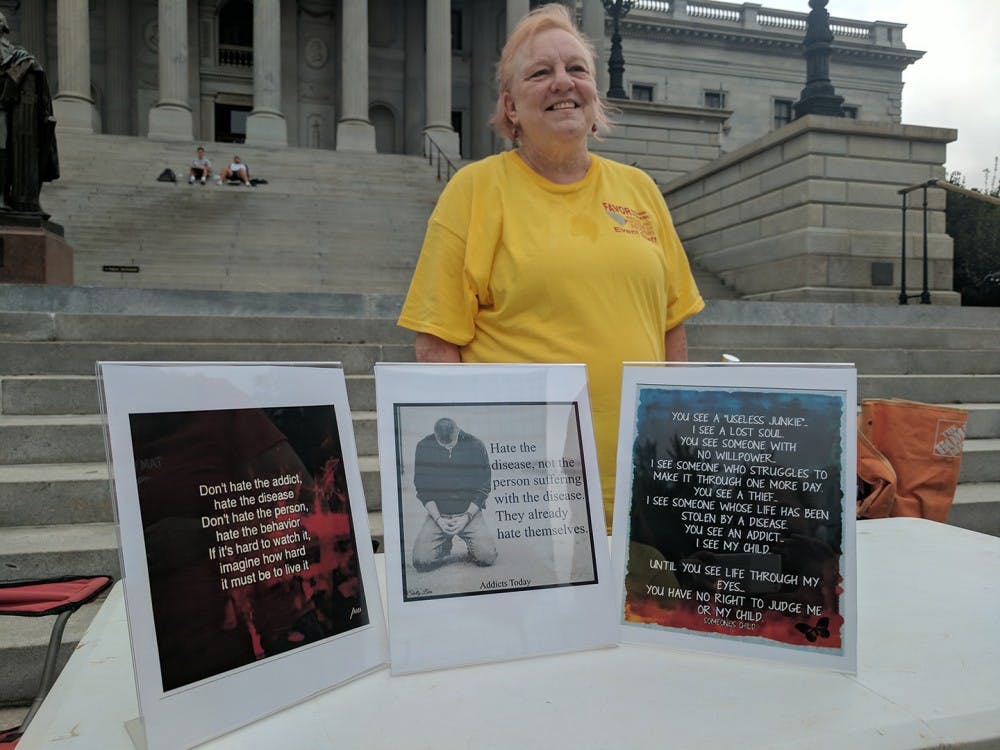The room is silent except for the distant sound of squeaking basketball shoes. Fanned out on a coffee table are some magazines, and perfectly aligned piles of handouts advertising counseling and tutoring sit untouched in the corner. Tucked in the back of the third floor in the Strom Thurmond Wellness and Fitness Center, the Gamecock Recovery and Study Space appears unused.
“If I was a new student on campus, new to recovery, 18, 19 years old, and I was looking for a place to be accepted and to hang out, that would be the last place that I would ever consider going,” fourth-year history student Brock Parrot said.
The location alone – next to two faculty cubicles and far from the center of campus – is enough to keep the room empty. But that doesn’t mean that there isn’t a need for recovery services on campus; instead, it speaks to the difficulties in reaching out to students.
“College students are a unique population,” social work graduate student Melissa Westlake said. “It’s extremely challenging because you can provide all these resources to students, you can have drop-in centers for recovery, but will students use them?”
Alcohol abuse is almost celebrated in college, and a lot of USC students go out multiple times a week. While it’s difficult to get a complete estimate of how many students at the University of South Carolina have a substance abuse problem, a national study in 2012 found that 5.4 percent of college students have abused prescription opioids. At USC, that’s almost 2,000 students.
In a college culture widely accepting the abuse of other prescription drugs like Adderall and Xanax – up to a third of college students try Adderall at least once – taking pills like Oxycontin and Vicodin can seem normal, especially in a social setting. We all know that one person who got high in a Five Points bathroom on some unknown substance.
“A lot of the college environment is catered to drinking, partying, and doing that whole lifestyle,” public administration masters student Tyler Crochet said. “I knew I didn’t want to do any of that.”
Crochet came to USC after dropping out of LSU addicted to pain medication. He completed several treatment programs, including one in Sumter, South Carolina.
Before he even arrived on USC's campus, he realized there was a need for a student recovery group. Many universities offer services tailored to students in recovery, from specialized housing to scholarships.
The College of Charleston recently started a recovery program that drew 14 students, according to an article from The State. Crochet estimates that a similar program at USC would see proportional enrollment, or about 45 students.
The problem, as always, is the cost. While the College of Charleston received a large grant for its program and some states have funding allocated to universities for the purpose, USC would have to move money from elsewhere.
Crochet started a group called Gamecock Recovery to create a community for students looking for a substance-free college experience. The group meets weekly for coffee and discussion.
Crochet said that running Gamecock Recovery as an actual service, which he thinks it should be, requires a full-time staff member.
“It’s more of just a social club at this point,” he said, because the organization lacks funding to create real perks for its members. Four to 15 students usually attend events, mostly friends of Crochet and Parrot that they met through other recovery efforts.
While the South Carolina legislature has made some efforts to improve treatment and accessibility, it, too, faces a funding problem.
The 2017 Governor’s Opioid Summit, held Wednesday and Thursday in Columbia, brings different groups together to discuss and collaborate on the opioid epidemic in South Carolina.
“I think people perceive a need, at least, now, and so there’s a lot more attention that's being directed at addiction,” Westlake said, whose sister has an opioid use disorder.
Recent large drug busts – 17 pounds of heroin were seized in Greenville in one week this summer – have commanded community attention. And as more and more people are affected personally by the epidemic, acceptance and recognition grows.
“We’re not bad people doing bad things,” Parrot said. “As human beings, we’re all tribal. We all want a sense of belonging and purpose.”
And they’re not finding that sense of belonging in Strom.

